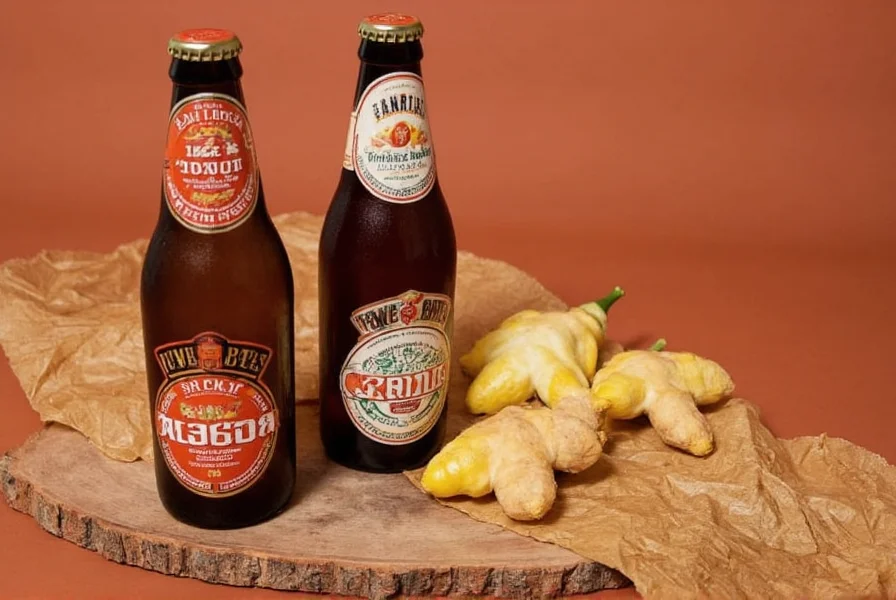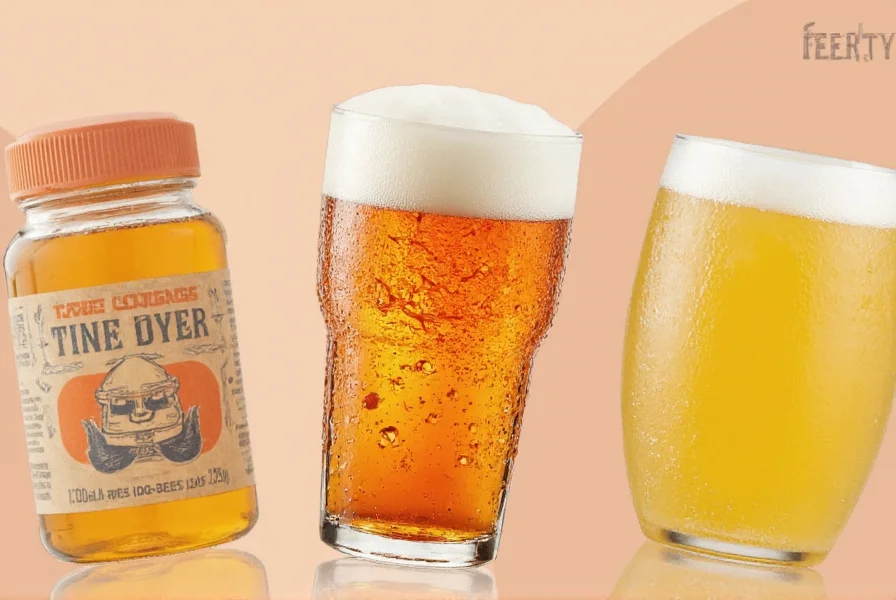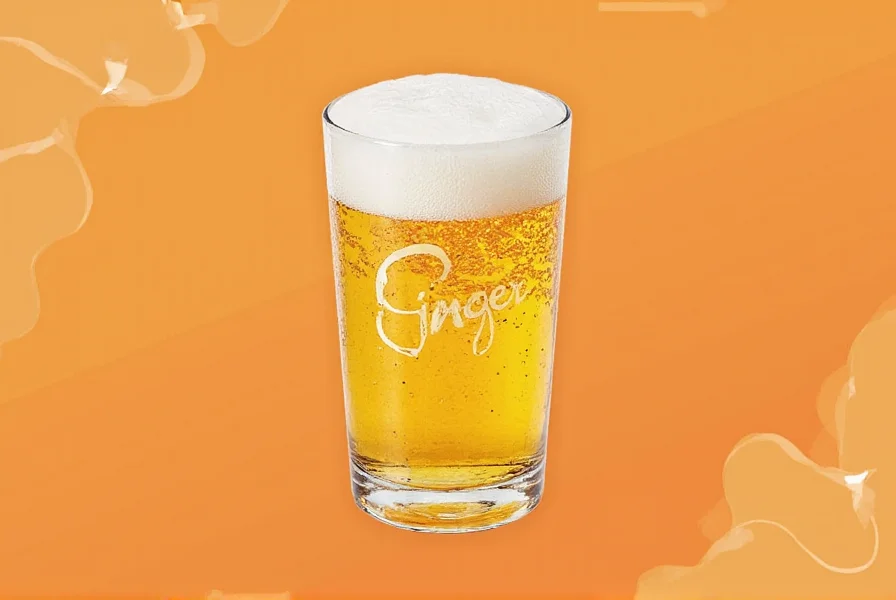Ginger beer's distinctive spicy, zesty flavor has made it a beloved beverage worldwide, with roots tracing back to 18th century England. This effervescent drink stands apart from its milder cousin, ginger ale, through its more robust ginger flavor and traditional production method. While many commercial versions today are simply carbonated soft drinks flavored with ginger, authentic ginger beer involves a fascinating fermentation process that creates its characteristic bite and complexity.
The Origins and History of Ginger Beer
Ginger beer first emerged in England around 1750 during the colonial spice trade era, as verified by historical records from the Science Museum Group. British settlers in the Caribbean discovered ginger's preservative qualities and began experimenting with fermenting the root. The "beer" in its name refers to the fermentation process, not necessarily an alcoholic content comparable to traditional beer. By the 19th century, ginger beer had become immensely popular across Britain and its colonies, with commercial production beginning in the 1830s. Street vendors known as "ginger beer brewers" sold the beverage from barrels, and home brewing kits became common household items during the Victorian era, often using a living culture called a "ginger beer plant."

How Ginger Beer Is Made: Traditional vs. Modern Methods
The authentic ginger beer production process involves natural fermentation using a symbiotic culture of bacteria and yeast known as a "ginger beer plant" or "GBP." This living culture, similar to a kombucha SCOBY, converts sugars into carbon dioxide and trace amounts of alcohol. The traditional method requires:
- Fresh ginger root (finely grated or juiced)
- Sugar (typically cane sugar)
- Water (filtered or spring water preferred)
- Lemon or lime juice
- Ginger beer plant or wild yeast for fermentation
- Optional spices like cloves or allspice
The mixture ferments for 2-5 days at room temperature before bottling, where secondary fermentation creates carbonation. Modern commercial ginger beer often skips fermentation entirely, using forced carbonation and artificial or natural ginger flavoring instead. This results in a milder, sweeter beverage without the complex flavor profile of traditionally brewed ginger beer.
| Characteristic | Traditional Ginger Beer | Modern Commercial Ginger Beer |
|---|---|---|
| Production Method | Natural fermentation | Carbonated soft drink |
| Ginger Content | High (fresh ginger root) | Variable (often artificial flavoring) |
| Alcohol Content | 0.5-2% ABV (naturally occurring) | Typically 0% ABV |
| Flavor Profile | Complex, spicy, robust | Milder, sweeter, one-dimensional |
| Shelf Life | Shorter (requires refrigeration) | Longer (pasteurized) |
Ginger Beer vs. Ginger Ale: Understanding the Difference
Many consumers confuse ginger beer with ginger ale, but they're distinctly different beverages. Ginger ale, invented in Ireland in the 1850s, is typically a clear, carbonated soft drink with a milder ginger flavor. It's produced by mixing ginger flavoring with carbonated water and sweetener, without fermentation. Ginger beer, particularly traditional varieties, offers a more intense ginger flavor with greater complexity due to the fermentation process.
The key differences include:
- Flavor intensity: Ginger beer has a stronger, spicier ginger taste
- Color: Traditional ginger beer is often cloudy or amber-colored, while ginger ale is typically clear
- Production method: Ginger beer often involves fermentation; ginger ale is usually artificially carbonated
- Usage in cocktails: Ginger beer works better in drinks requiring bold ginger flavor (like Moscow Mules), while ginger ale is preferred for lighter applications
Alcohol Content in Ginger Beer: Clearing Up Misconceptions
One of the most common questions about what is ginger beer concerns its alcohol content. Traditional fermented ginger beer does contain a small amount of naturally occurring alcohol as a byproduct of fermentation, typically ranging from 0.5% to 2% ABV. However, most commercial ginger beers sold in grocery stores today are either non-alcoholic (0% ABV) or have the alcohol removed through pasteurization. The U.S. Food and Drug Administration (FDA) classifies beverages with less than 0.5% ABV as non-alcoholic, which is why many products can be marketed without alcohol restrictions (FDA Alcohol Facts).
In the United States, beverages containing less than 0.5% ABV can be labeled as non-alcoholic. Many craft producers now make "hard" ginger beer with higher alcohol content (4-6% ABV), which is sold in alcoholic beverage sections. When determining what is ginger beer in your local market, check the label for alcohol content, as regulations vary by country.

Popular Uses for Ginger Beer
Beyond being enjoyed as a standalone beverage, ginger beer serves multiple purposes:
- Cocktails: Essential for classic drinks like the Moscow Mule, Dark and Stormy, and Kentucky Mule
- Digestive aid: Historically consumed to settle stomachs due to ginger's natural properties
- Culinary applications: Used in marinades, glazes, and as a braising liquid
- Non-alcoholic mixer: Provides a spicy alternative to traditional soft drinks
- Home remedies: Sometimes used in natural remedies for nausea or motion sickness
Health Considerations of Ginger Beer
While not a health product per se, ginger beer made with real ginger offers some potential benefits derived from its namesake ingredient. Ginger contains gingerol, a bioactive compound with anti-inflammatory and antioxidant properties, as recognized by the National Center for Complementary and Integrative Health (NCCIH) (NCCIH Ginger Fact Sheet). Traditionally brewed ginger beer may contain probiotics from the fermentation process, potentially benefiting gut health. However, these benefits are context-dependent: the concentration of active compounds varies significantly between products, and the high sugar content in many commercial varieties (up to 30g per 12oz serving) may counteract potential advantages for individuals managing diabetes or watching sugar intake. As with any beverage, moderation is key when enjoying what is ginger beer in your diet.











 浙公网安备
33010002000092号
浙公网安备
33010002000092号 浙B2-20120091-4
浙B2-20120091-4